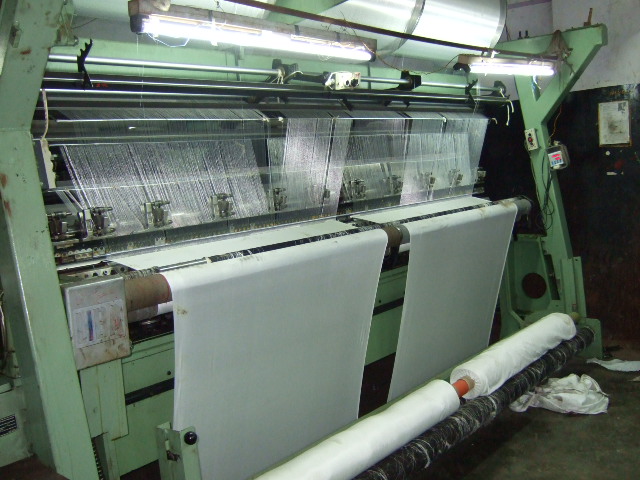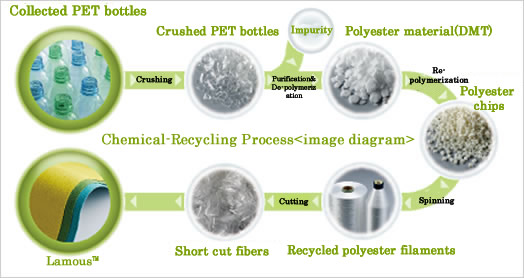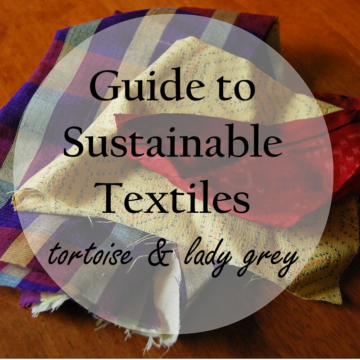Polyester is cheap and versatile, and for that reason, it has become ubiquitous in fashion, but the environmental impacts of polyester are also significant. Before we delve into the environmental impacts of this textile, it is worth discussing its characteristics to understand why it is such a popular choice in fashion.

- A version of this article previously appeared on Tortoise and Lady Grey.
Polyester is frequently used for its wrinkle-free properties. Clothing made from this textile tend not to need to be ironed or pressed to maintain their shape and surface. Because it often doesn’t need to be ironed and it can be washed easily in the washing machine, it is very convenient for the wearer to maintain. It also tends to be quick drying which is useful in places that have long periods of cold or wet weather. High-quality polyester lasts well and maintains the quality of its surface. However, the great majority of polyester on the market is very poor quality, and it used by manufacturers because it is a cheap alternative to natural fibers. Most polyester clothing on the market is cheap, poor quality fast fashion, which will last few wears.
Polyester is a synthetic petroleum-based fiber and is therefore made from a carbon-intensive non-renewable resource. Petroleum products are used as feedstock (raw material to make the fiber) and also used to generate the energy needed to manufacture. More than 70 billion barrels of oil are used to make polyester each year. It is not bio-degradable and will persist in the ecosystem even as it eventually breaks apart. In fact, it is believed that synthetic garments are the biggest source of microplastic pollution in the oceans because up to 1900 fibers can be washed off one garment every time it is washed.
Although it is less energy intensive than nylon to produce, it still requires more than double the energy of conventional cotton to produce. The production of polyester uses harmful chemicals, including carcinogens, and if emitted to water and air untreated, can cause significant environmental damage. Most polyester is produced in countries such as China, Indonesia, and Bangladesh where environmental regulations are lax, and air and water pollution is often discharged untreated, resulting in significant pollution and harm to communities in the vicinity of (as well as downstream and downwind of) manufacturing plants. The water intensity of production is much lower than that for natural fibres. However, polyester cannot be dyed using low-impact and natural dyes. This means that the detrimental impact on water supplies is potentially far greater.

One of the most positive aspects of polyester is that it is completely recyclable, and it is also possible to manufacture polyester from recycled plastics. This means that we can access the benefits of polyester without needing to manufacture from virgin petroleum stocks. There are an increasing number of new polyester-type fabrics that are made from recycled plastics, including the certified recycled fabric Repreve, which is made from recycled plastic bottles and is commonly used in sportswear and men’s swimwear. There are also some producers, such as Eco Intelligent Polyester that are infinitely recyclable and recycle old polyester clothing to create new polyester, however, these are not yet common or easy to access.
The environmental impacts of polyester are significant. Cheap polyester is probably the biggest offender when it comes to the high environmental cost of fashion. If you want to maintain a sustainable wardrobe, it is best to avoid purchasing new polyester garments unless they are manufactured with fabric made from recycled polyester or recycled plastics. Due to the impact of microfibers on oceans, I would avoid still avoid polyester garments as much as possible. Choose recycled polyester for garments such as rainwear or athletic wear if you prefer its performance for these specialized uses. Otherwise, substitute it for natural fibers when you can. If you have old polyester garments to dispose of, investigate where you can have them recycled so that existing polyester stocks do not end up in a landfill. Recycling programs for old textiles are becoming more common, but you will need to do your research to find our whether you have access to a program in your local area. Follow these practices and you can minimize the impact of your polyester use.

If you enjoyed this post and learned something new, you will learn a lot from my Guide to Sustainable Textiles. This thoroughly researched guide takes you through all the ethical and sustainability considerations in textiles to enable you to make purchase decisions that are in line with your ethics and commitment to sustainability. The 60-page guide covers all the major textiles, including leather and vegan leather alternatives, as well as a run down on textile certification systems which demonstrate sustainable processes. If you want to be able to assess the sustainability of your favorite brands, this is the guide you need.
Do you have a favorite polyester alternative?
Related: Cotton: The Hard Truth about This Soft Fabric
4 Facts You Need to Know About Fast Fashion
What You Need to Know about Microbeads Ban
Get more like this–Subscribe to our daily inspirational newsletter for exclusive content!
__
Photo: Fashion Rating World, Summer Edwards




